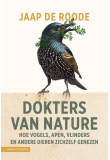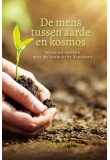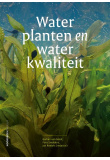Through combining her two fields of expertise, Alanna has discovered that implementing a geomantic permaculture design for sustainable food production and living helps to alleviate environmental problems on many levels, as well as the negativity and unsustainability of today’s society. In this book she describes how to undertake a sensitive analysis of land capability in order to co-creatively develop a harmonious permaculture plan.
Description
Permaculture is the ethical design of sustainable culture and it’s mostly associated with eco-smart food gardening. For the past 22 years author Alanna Moore has been a keen permaculture practitioner and promoter, while for 26 years she has also worked as a geomancer, assessing and balancing the subtle energies of places.
Alanna explains how eliciting nature’s help in the garden and co-operating with the resident fairies can foster harmonious feng shui and the growth of vegetables, as well as nourish our own inner, spiritual gardens. She has discovered that nature spirits continue to be a dynamic force in the landscape. By pendulum dowsing and meditative attunement she finds exactly where these beings are stationed and can thus avoid disturbing them.
Alanna has been dividing her time between Australia and Ireland, both places where knowledge of geomancy the Earth’s subtle, energetic dimensions – has survived relatively well, in understated undercurrents at the least. The Australian Aborigines and native Irish are highly intuitive peoples. Like other animist societies, the Irish believed that fairy beings help to care for their crops and livestock and that the ‘Good People’ must always be thanked, and their homes and pathways respected.
Contents:
Chapter 1: Sacred perspectives
The sacred landscape Diminuation of ‘resources’ Living traditions Animism
Chapter 2: What is permaculture?
Final frontiers Permaculture design Eco-spiritual approach
Chapter 3: Slow living
Slow cooking Slow down Living slow Still mind Slow get around
Chapter 4: Sustainability and Dreaming
Sustaining our dreams Sustaining Earth’s Dreaming
Chapter 5: Earth awareness, self awareness
Colonisation Unwelcoming lands Learning to listen
Chapter 6: Assessing land capability
Path of Least Effort Ethics of site selection Recovering landscapes
Patterns of influence State of the soil Soil dowsing Soil aeration and initial planting
Chapter 7: Geobiology and geomancy
‘Hungry grass’ Geomancy & Earth dragons Planning with the fairies Feng shui Confirming the best home site
Chapter 8: Sensitive site analysis
Connecting to the Dreaming Microclimates Survey the wildlife Trackways Vegetation mapping
Chapter 9: Harmonising your space
Balance of the elements Sacred relationships with nature Hauntings and emotional debris Earth acupuncture Altering energy patterns Honouring spirit beings Troubles at boundaries
Chapter 10: Co-operating with the land
Loving the land Deva gardeners Dowsing in the garden Problems with metals Curvy gardens Keeping dragons happy Zone Five fairyland DIY sacred sites
Chapter 11: Permaculture on a low budget
Getting livestock Soil improvement
Getting plants Trading energy The waste resource Free stuff
Chapter 12: Sensitive earthworks
Preparation for earthworks Dam building The aftermath
Chapter 13: Pollution and transformation
Liquid waste Urine in the garden Humanure Devas and compost
Chapter 14: Dealing with pests and weeds
Slow weeding Below the radar Less pests in polycultures Biodynamic approach
Chapter 15: My Irish summer with the fairies
Discovering the land’s magic Fairy warning Preparation for earthworks Magic flower crop Crone deva
Re-aligning the fairy pass Building blessings Dark lord of the fields
Chapter 16: Restoring the woodlands
We want natural woodlands! Sacred trees Plant sacred groves
Chapter 17: Living energies of the household
Imagine House spirit Building biology Living Architecture
Chapter 18: Seeding an eco-future
Save our seeds Cultivate good energy Celebration and thanks
210mm x 148mm, 135 b&w pages, 2009
Review of Sensitive Permaculture
“Self-described animist and geomancer Alanna Moore covers much more than permaculture alone in her seventh book. While she has great advice on the ethical design of sustainable culture, she also shares an energetic, loving approach to sustainable land planning, acknowledging the nature spirits that provide dynamic force in the landscape. Moore divides her time between Australia and Ireland, and so has wisdom to impart from the indigenous traditions of both lands.
“Informing her approach is the idea of sacred custodianship of country, which puts a spiritual perspective on such things as assessing land capability, selecting a home site and designing a living home. Moore is as comfortable with devas and fairies as she is with dealing with waste and pollution, pests and weeds. Read about harmonizing your space in line with natural energies, co-operating with the land and its creatures, building sensitive earthworks and creating a permaculture paradise on a budget.
“Moore explores the Green Man concept and shows how we can attune to the spirit of our own household as well as save seeds for a sustainable eco-future. Her book is an adventure in magical and practical Earth awareness.” – reviewed in Nexus magazine, Feb – March 2012
 Alanna Moore
Alanna Moore
Master dowser with over 30 years experience, Alanna helped to found the New South Wales Dowsing Society in 1984 and is now a patron of the Australian Dowsers Society. She is the author of seven books, has made 21 films and has produced several magazines about dowsing in Australia since 1982.
She has extensively traveled around Australia teaching dowsing and geomancy, and building Power Towers to enhance plant growth. Since 2000 she has been an international speaker and teacher, presenting in New Zealand, Malaysia, Taiwan, Holland, Poland, Sweden, UK and Ireland. Alanna is also a permaculture farmer and teacher specialising in ‘sensitive permaculture’ design.






























